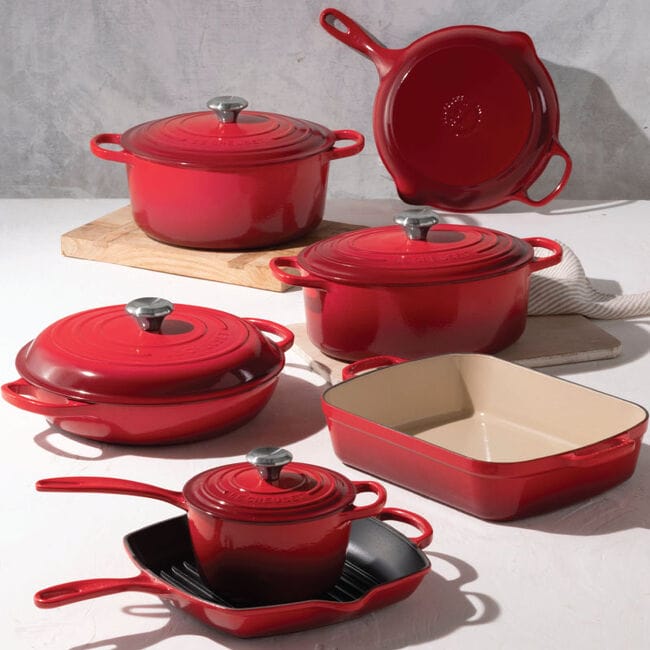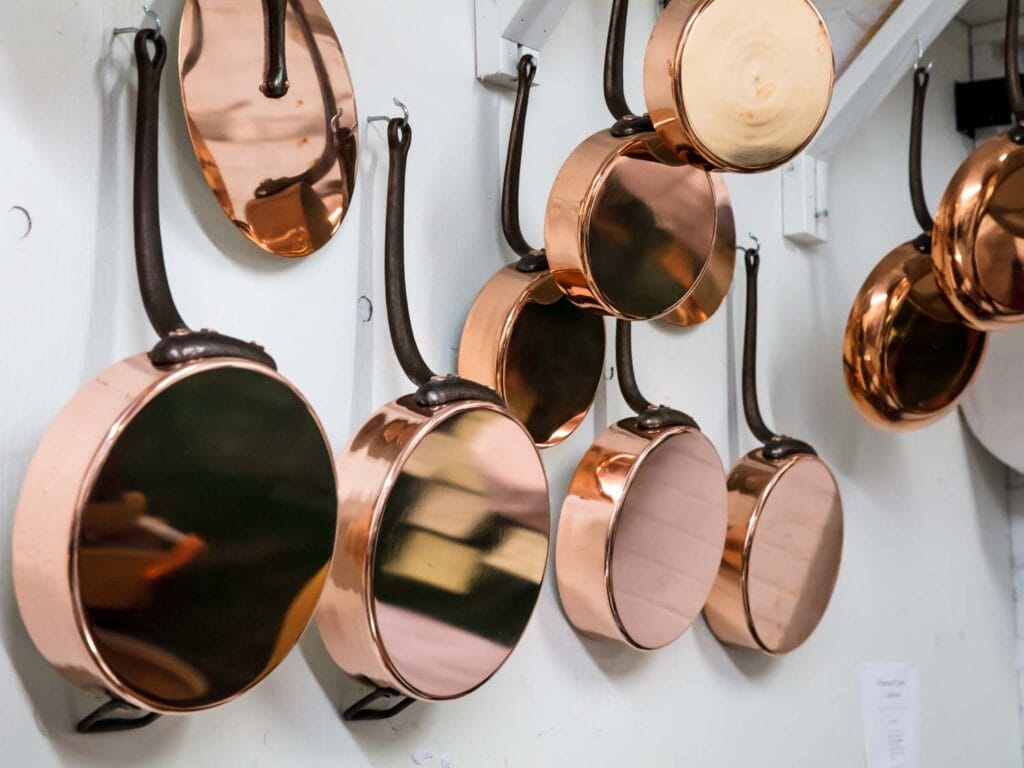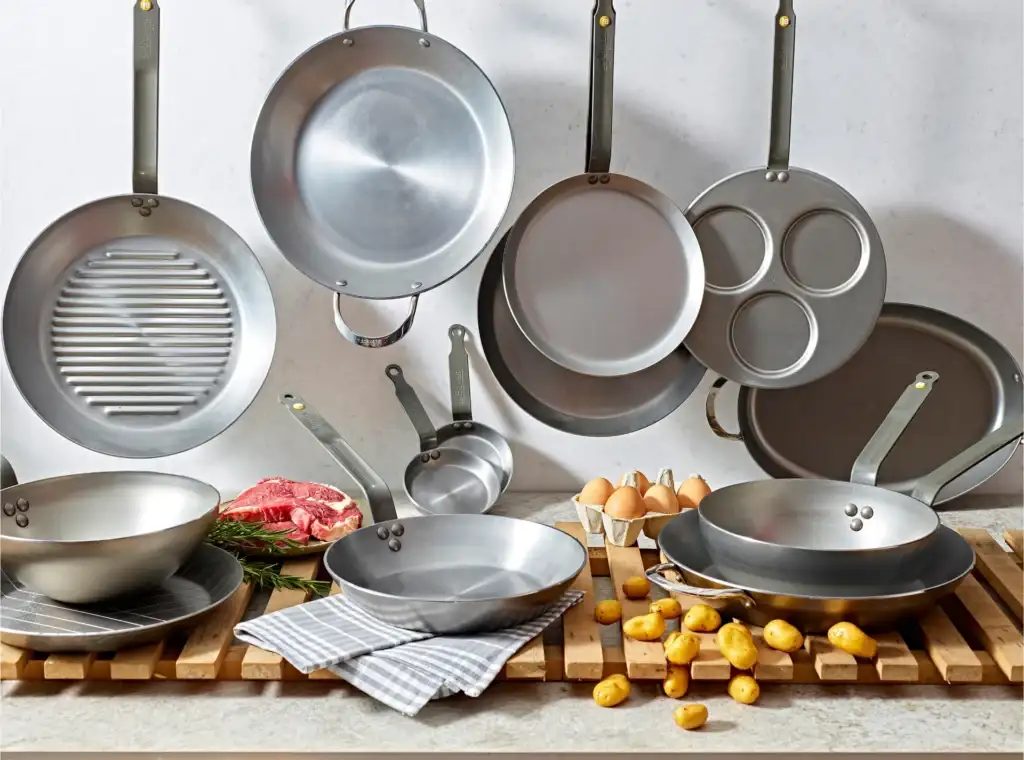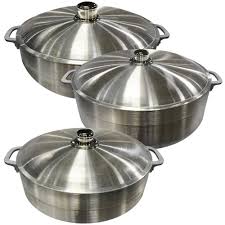Let’s go over the types of cookware materials you can choose for your kitchen. It is more than likely that you will need cookware and bakeware in a few different material types to ensure you have the correct pot or pan for your recipe.
Cast Iron

Cast iron cookware is great at retaining heat, which allows for quicker recovery between dishes and makes it an ideal serving vessel to keep cooked foods hot. It can be used on electric, gas, induction, or open flame heat sources and can withstand very high temperatures without warping or damage. It does require more maintenance than other cookware materials, but the benefit is that with routine seasoning and proper cleaning techniques, cast iron cookware can last a lifetime
| Pros | Cons |
| Durable | Heavy |
| Good heat conductor | Rusts if not kept conditioned and dried at all times |
| Maintains temperature | Requires seasoning to maintain a non-stick surface |
Aluminum

Aluminum cookware is affordable and an excellent conductor of heat. They are lightweight, so maneuvering them while cooking and cleaning requires less effort and is easier on the wrists. Pay attention to what ingredients you cook with when using bare aluminum cookware, unless it has a hard-anodized or non-stick layer, as it is reactive with acidic foods and can alter the flavor of your recipes
| Pros | Cons |
| Excellent heat conductor | Prone to discoloration |
| Lightweight and easy to maneuver | Reacts to acidic foods |
| Affordable |
Copper

Out of all the material types, copper cookware is the best to ensure even heat distribution. They are also one of the most visually appealing materials, making them a great choice for catering events, buffets, and restaurants with open cooking concepts. To make sure it is safe and non-toxic to use, you should only look into purchasing copper cookware that is lined with another material like steel or tin.
| Pros | Cons |
| Best heat conductor for cookware | Expensive |
| Visually appealing | Bends and dents easily |
| Oven-safe | Can react chemically with some foods to create poisonous compounds |
Stainless Steel

Stainless steel cookware holds many benefits including its durability, compatibility with induction cooktops, and its ability to be run through a dishwasher. Its nonreactive properties make it an excellent solution for your slow-simmering tomato sauces and other acidic recipes. However, stainless steel is a poor conductor of heat and can have trouble with even heating. To combat this, some manufacturers include an aluminum core in the cookware’s bottom to promote heat distribution and eliminate hot spots
| Pros | Cons |
| Durable and corrosion-resistant | Poor heat conductor |
| Resists staining | Prone to hot spots and scorching |
| Does not react to foods | |
| Easy to clean | |
| May feature a multi-ply construction to aid in heat conduction and distribution |
Cast Aluminum

Cast aluminum cookware conducts and retains heat well and it is also quick to cool down. It is lightweight, making it easy to handle, and many feature a durable, food-safe ceramic enamel coating that resists sticking and rust for long-lasting use. Plus, cast aluminum cookware is compatible with induction cooktops and is oven-safe
| Pros | Cons |
| Conducts and retains heat well | Warps easily |
| Lightweight | Potentially reactive to acidic foods, changing the taste of food |
| Inexpensive alternative to cast iron | |
| Resists rust and sticking foods |
